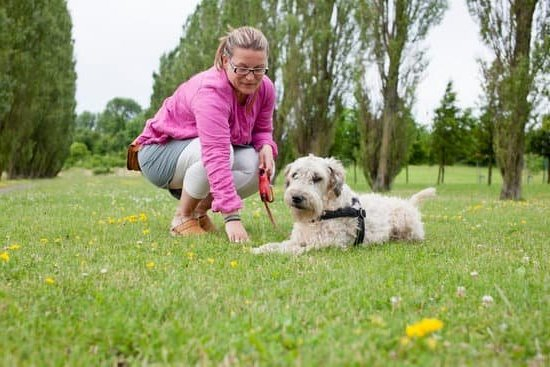Therapy dogs play a crucial role in providing comfort, support, and companionship to individuals in various settings, including hospitals, nursing homes, schools, and disaster areas. These specially trained canines have the unique ability to improve physical and emotional well-being, making them valuable members of society. How are therapy dogs trained today to ensure they meet the needs of those they serve?
The history of therapy dogs dates back to World War II when they were first used to assist soldiers suffering from emotional trauma. Over time, their role has evolved to encompass a wide range of therapeutic activities for people of all ages. Today, therapy dogs are recognized for their incredible contributions to healthcare and community service.
The benefits of therapy dogs are immeasurable. From reducing stress and anxiety to increasing social interaction and improving overall mood, these furry companions have a profound impact on those they encounter. To excel in their role, therapy dogs must possess specific characteristics that make them suitable for engaging with diverse populations. Training plays a critical role in developing these traits and preparing them for their important work.
History of Therapy Dogs
Therapy dogs have a rich history dating back to as early as World War II when they were first utilized to provide comfort and companionship to soldiers recovering from emotional trauma. Over the years, their role has evolved significantly, expanding beyond military settings to various environments such as hospitals, schools, nursing homes, and disaster relief areas. These furry companions play a crucial role in providing emotional support and improving the well-being of individuals facing physical or mental challenges.
To better understand how therapy dogs are trained today, it is essential to recognize the key characteristics that make a dog suitable for this type of work. Some of the traits that trainers look for include calm demeanor, friendliness, good social skills, patience, and the ability to remain focused in distracting situations. Additionally, therapy dogs should be comfortable around different people and environments, as they will encounter a variety of individuals during their visits.
When it comes to training methods employed today, positive reinforcement is widely regarded as one of the most effective techniques. This approach involves rewarding desirable behaviors with treats or praise to reinforce them positively. Furthermore, specialized programs designed specifically for therapy dog training focus on obedience commands, socialization skills, and exposure to different stimuli to prepare them for various scenarios they may encounter during their interactions with individuals in need.
Benefits of Therapy Dogs
Therapy dogs play a crucial role in today’s society by providing much-needed comfort, emotional support, and companionship to individuals facing various challenges. These loyal canines are trained to offer unconditional love and bring joy to those in need, making a significant impact on the lives of many. But how are therapy dogs trained today to excel in their role as healers and helpers?
Here are some key aspects of how therapy dogs are trained in modern times:
- Positive Reinforcement: Training methods for therapy dogs often revolve around positive reinforcement techniques, rewarding good behavior with treats or praise. This encourages the dog to exhibit desired behaviors consistently.
- Socialization Skills: Therapy dogs undergo extensive socialization training to ensure they are comfortable and well-behaved in various environments and around different people.
- Specialized Programs: Many organizations offer specialized programs for training therapy dogs, focusing on specific skills such as obedience, task performance, and empathy towards individuals experiencing distress or trauma.
Therapy dogs can provide a wide range of benefits to individuals in need, both physically and emotionally. Some of the advantages of having therapy dogs around include:
- Easing Anxiety: Therapy dogs have a calming presence that can help reduce anxiety levels in individuals facing stressful situations or medical treatments.
- Improving Mood: Interacting with therapy dogs has been shown to boost mood and increase feelings of happiness and well-being.
- Enhancing Socialization: Therapy dogs can encourage social interactions among individuals who may be struggling with isolation or communication difficulties.
Characteristics of a Good Therapy Dog
Therapy dogs play an essential role in providing comfort, support, and companionship to those in need. They are specially trained to offer emotional assistance and improve the overall well-being of individuals in various settings. But what makes a dog suitable for therapy work? Trainers look for specific traits and qualities in dogs that make them exceptional therapy companions.
One key characteristic of a good therapy dog is their temperament. These dogs should be friendly, gentle, patient, and able to remain calm in different situations. They must also be highly socialized and comfortable interacting with people of all ages, backgrounds, and abilities. Additionally, a therapy dog should have a strong bond with their handler and demonstrate reliability and obedience during therapy sessions.
In today’s training programs for therapy dogs, positive reinforcement is commonly used as an effective method to shape desired behaviors. This approach involves rewarding the dog with treats or praise when they display the correct behavior, encouraging them to repeat it. Specialized programs focusing on obedience training, socialization skills, and desensitization techniques are also implemented to prepare therapy dogs for their important role. Overall.
| Therapy Dog Training Methods | Positive Reinforcement |
|---|---|
| Specialized Programs | Obedience Training |
| Socialization Skills Development | Desensitization Techniques |
Training Methods
Training therapy dogs today involves a combination of modern training techniques that focus on positive reinforcement and specialized programs to ensure these animals are well-prepared for their important role in society. Positive reinforcement is a key component of therapy dog training, where dogs are rewarded for exhibiting desired behaviors. This method helps create a strong bond between the dog and their handler while also instilling a sense of confidence in the dog.
Positive Reinforcement
Positive reinforcement training methods involve rewarding therapy dogs with treats, toys, or praise when they perform specific behaviors correctly. By associating good behavior with positive outcomes, dogs are more likely to repeat those actions. Trainers use this technique to teach therapy dogs various skills, such as staying calm in stressful situations and interacting gently with individuals.
Specialized Programs
In addition to positive reinforcement, therapy dogs may undergo specialized training programs tailored to their specific role. These programs focus on teaching dogs how to behave appropriately in various environments, including hospitals, schools, nursing homes, and disaster relief settings. Training may also include exposure to different sounds, smells, and sights to acclimate the dogs to potential stressors they may encounter during their work.
Furthermore,”how are thereapy dogs trained,” organizations that certify therapy dogs often provide guidance on best practices for training. Trainers who work with these organizations undergo rigorous training themselves to ensure they are equipped with the knowledge and skills needed to train therapy dogs effectively. By utilizing modern training techniques and specialized programs, therapy dogs can make a meaningful impact on the lives of those they serve in diverse settings.
Certification Process
Training Requirements
To become a certified therapy dog team, both the dog and their handler must undergo specific training requirements. One of the essential aspects of training is ensuring that the dog is well-behaved, calm, and friendly in various environments. Trainers focus on teaching obedience commands, proper behavior around strangers, and how to remain calm in potentially stressful situations. Additionally, therapy dogs need to be comfortable with being petted, hugged, and handled by different individuals.
Evaluation Process
After completing the necessary training, therapy dogs and their handlers must undergo evaluation to assess their suitability for therapy work. These evaluations are typically conducted by organizations or certifying bodies that specialize in therapy animal programs.
During the evaluation process, dogs are observed for their behavior around various stimuli, interactions with people of all ages, tolerance for loud noises or sudden movements, and ability to follow commands from their handlers. Handlers are also evaluated on their ability to manage and control their dogs effectively.
Registration
Once a therapy dog team successfully completes the training requirements and passes the evaluation process, they can proceed with registering as a certified therapy dog team. Registration often involves submitting documentation of training completion, evaluation results, vaccination records, and any other required information to the certifying organization. Registered therapy dog teams may receive identification badges or vests that identify them as certified therapy animals when visiting facilities or interacting with individuals in need of emotional support.
Real-Life Examples
Therapy dogs are making a significant impact on individuals in various settings, providing comfort, support, and companionship. One exemplary story is about a therapy dog named Luna who visits a local hospital’s pediatric ward. Luna has a gentle demeanor and a calming presence that helps children feel at ease during their medical treatments. These regular visits from Luna have shown to reduce anxiety levels among young patients, making their hospital experience more bearable.
Another heartwarming example is Max, a therapy dog that works with elderly residents in a nursing home. Max brings joy and companionship to the residents, many of whom may feel isolated or lonely. Through simple interactions like petting Max or playing fetch with him, the residents experience boosted morale and improved emotional well-being. Max’s presence has not only benefited the individual residents but has also fostered a sense of community within the nursing home.
These real-life examples showcase the positive impact that therapy dogs have on individuals from all walks of life. Through their unconditional love and support, therapy dogs like Luna and Max are able to make a difference in the lives of those they interact with. It is through stories like these that we can truly appreciate the training and dedication that goes into preparing therapy dogs for their important work in various settings.
| Therapy Dog | Setting | Impact |
|---|---|---|
| Luna | Pediatric ward at a hospital | Reduced anxiety levels among young patients |
| Max | Nursing home for elderly residents | Boosted morale and improved emotional well-being for residents |
Continuing Education for Therapy Dogs
When it comes to therapy dogs, training is an ongoing process that is crucial to ensure their effectiveness in providing support and comfort to individuals in need. Today, therapy dog training goes beyond basic obedience skills and focuses on developing specific behaviors and responses that are needed in various therapeutic settings. So, how are therapy dogs trained today to meet the demands of their roles?
One of the key aspects of training therapy dogs today is the emphasis on positive reinforcement. This method involves rewarding desired behaviors with treats or praise, which helps the dogs learn what is expected of them in a positive and encouraging way. Trainers also use clicker training, where a clicking sound signals to the dog that they have performed a behavior correctly, further reinforcing their learning.
Additionally, specialized programs are available for therapy dog training, focusing on specific skills such as interacting with patients in hospitals or providing emotional support during times of distress. These programs tailor the training to the unique needs of different therapeutic environments, ensuring that therapy dogs are well-prepared for their roles.
Continuous education and development are also essential for therapy dogs to stay sharp and adaptable in their work. Regular training sessions help reinforce skills and keep them engaged and responsive to those they are assisting.
Conclusion
Therapy dogs play a crucial role in today’s society, providing comfort, companionship, and support to individuals in need. As we have delved into the history, benefits, characteristics, training methods, certification process, real-life examples, and ongoing education of therapy dogs, it is evident how essential their proper training is.
The question “How are therapy dogs trained today?” has been answered through the exploration of modern techniques such as positive reinforcement and specialized programs tailored to develop these canines into effective therapy companions.
The significance of having well-trained therapy dogs cannot be overstated. These furry companions have the power to bring joy and relief to individuals facing physical or emotional challenges.
The traits that make a good therapy dog, from calm demeanor to empathy and patience, are carefully nurtured through rigorous training processes. It is heartening to see the positive impact that these specially trained dogs can have on those they interact with in various settings such as hospitals, nursing homes, schools, and even disaster relief situations.
In conclusion, the dedication and effort put into training therapy dogs ultimately serve a noble cause – spreading love and comfort to those who need it most. By highlighting the importance of ongoing education for these remarkable animals, we ensure that they continue to excel in their roles as therapists and companions for years to come.
The bond between humans and therapy dogs is a testament to the power of unconditional love and support that these incredible animals provide in our society today.
Frequently Asked Questions
Do Therapy Dogs Come Trained?
Therapy dogs typically undergo specialized training to prepare them for their role in providing emotional support and comfort to people in need. Although some breeds may have innate qualities that make them suitable for this work, formal training is essential to ensure they can handle various environments and situations.
What Makes a Therapy Dog a Therapy Dog?
A therapy dog becomes a therapy dog after completing training and passing evaluations that test their temperament, behavior, and obedience. They are trained to remain calm, gentle, and friendly when interacting with diverse groups of people in settings such as hospitals, schools, and nursing homes. Their main function is to bring joy and comfort to those they visit.
What Is the Difference Between a Normal Dog and a Therapy Dog?
The key difference between a normal dog and a therapy dog lies in their training and purpose. While all dogs can provide companionship and love to their owners, therapy dogs are specifically trained to offer support to individuals other than their handlers. They are taught to be well-behaved in various social situations and remain calm in potentially stressful environments.

Welcome to the blog! I am a professional dog trainer and have been working with dogs for many years. In this blog, I will be discussing various topics related to dog training, including tips, tricks, and advice. I hope you find this information helpful and informative. Thanks for reading!





